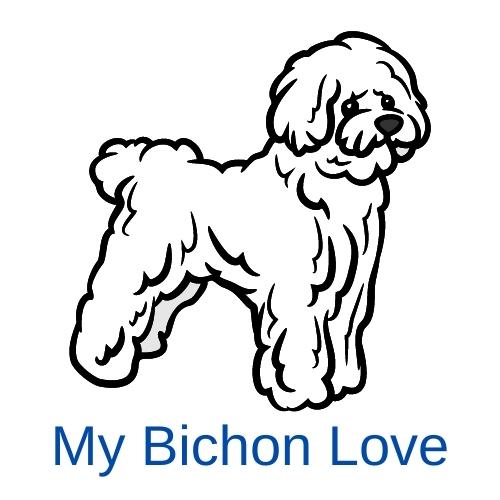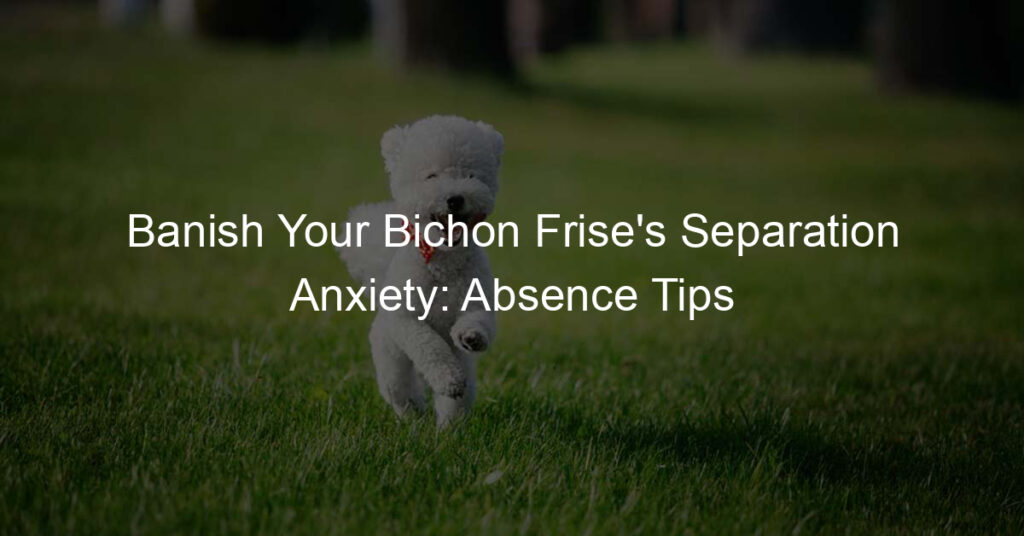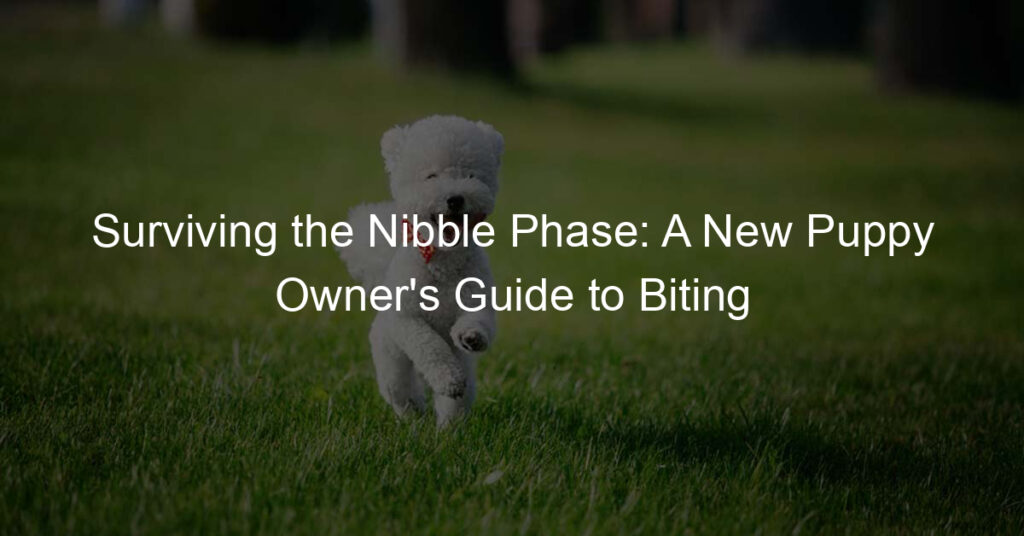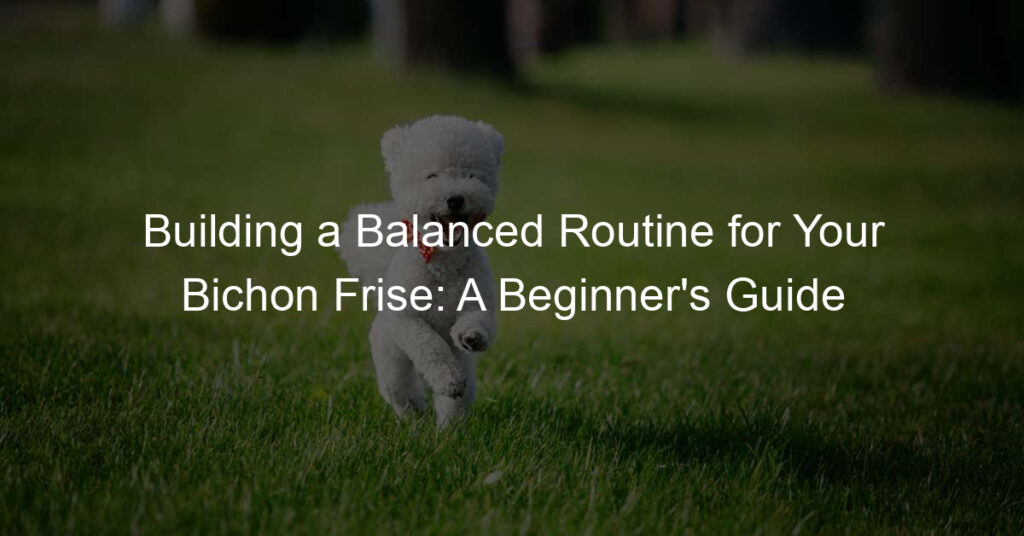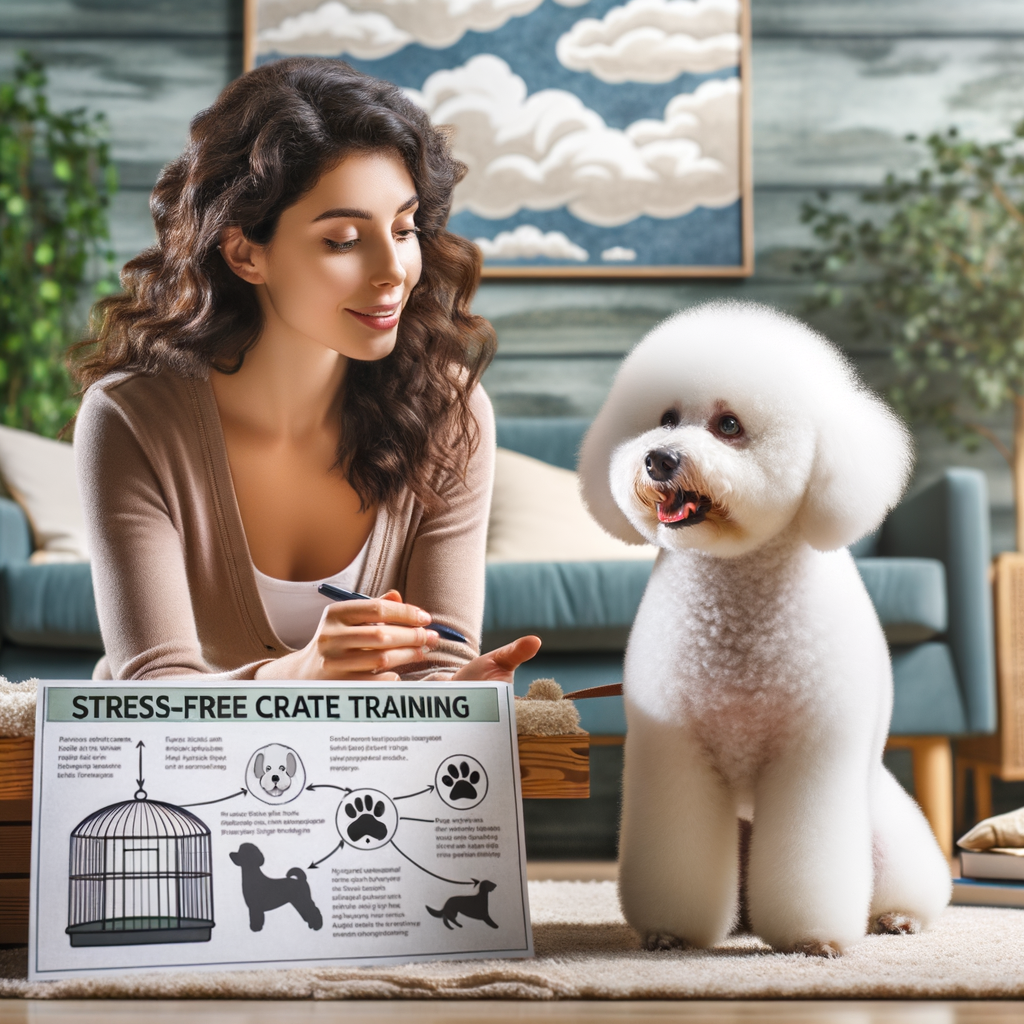
Introduction to Crate Training Bichon Frise
Training your Bichon Frise can be a rewarding experience for both you and your furry friend. One of the most effective training methods is crate training. This method is not only beneficial for housebreaking your pet, but it also provides a safe and comfortable space for your Bichon Frise. In this section, we will delve into the importance of crate training and its benefits.
- Understanding the Importance of Crate Training
- Benefits of Crate Training Your Bichon Frise
Crate training is a method that uses your dog’s natural instincts as a den animal. A wild dog’s den is their home—a place to sleep, hide from danger, and raise a family. The crate, or den, offers your Bichon Frise a sense of security and a space of their own. When used correctly, the crate becomes a valuable tool for managing your dog’s behavior, helping with toilet training, and teaching them to be alone. It’s important to remember that the crate should never be used as a punishment.
There are numerous benefits to crate training your Bichon Frise. Firstly, it can significantly ease the housebreaking process as dogs do not like to soil their sleeping areas. Secondly, it provides a safe and secure environment for your dog when you cannot supervise them, preventing them from getting into mischief. Lastly, it offers a comfortable and familiar space for your dog, reducing anxiety when traveling or visiting unfamiliar places.
In the following sections, we will provide practical tips on how to effectively crate train your Bichon Frise, discuss common challenges you might face, and share success stories to inspire you on this training journey. Remember, patience and consistency are key to successful crate training.
Bichon Frise Training Tips
Training your Bichon Frise can be a rewarding experience. One of the key aspects of training is creating a stress-free environment. Let’s explore how you can achieve this.
Creating a Stress-Free Environment for Bichon Frise
Creating a stress-free environment for your Bichon Frise is crucial for successful training. This involves choosing the right crate and making it comfortable for your pet. Here are some tips to help you:
- Choosing the right crate: The crate should be large enough for your Bichon Frise to stand, turn around, and lie down comfortably. However, it should not be so large that your pet can use one end as a bathroom and the other end as a living space. A crate that is too large can make your Bichon Frise feel insecure. A good rule of thumb is to measure your dog from the tip of the nose to the base of the tail and add 2-4 inches to determine the correct crate length.
- Creating a comfortable space inside the crate: Make the crate comfortable and inviting for your Bichon Frise. You can add a soft blanket or a dog bed, and a few safe toys. It’s also a good idea to include an item that smells like you, such as an old T-shirt, to provide comfort and reduce anxiety. Remember, the goal is to make the crate a place where your Bichon Frise feels safe and secure.
Creating a stress-free environment for your Bichon Frise is the first step towards successful training. By choosing the right crate and making it comfortable, you can help your pet feel secure and ready to learn.
Effective Bichon Frise Crate Training Techniques
Training your Bichon Frise to be comfortable in a crate is a step-by-step process. Let’s explore some effective techniques that can make this process smoother and stress-free for both you and your pet.
- Introducing your Bichon Frise to the crate
- Gradually increasing crate time
- Using rewards for positive reinforcement
Start by placing the crate in a common area where your Bichon Frise spends most of its time. This could be the living room or kitchen. Keep the door of the crate open and let your pet explore it on its own. You can place a soft blanket or a favorite toy inside to make it more appealing. Remember, the goal is to make your Bichon Frise associate the crate with comfort and safety.
Once your Bichon Frise is comfortable entering the crate, you can start closing the door for short periods. Start with just a few minutes and gradually increase the time. Always ensure your pet is calm and relaxed before you close the door. Never use the crate as a punishment, as this can create a negative association.
Positive reinforcement is key in crate training. Whenever your Bichon Frise enters the crate on its own or stays calm while the door is closed, reward it with a treat or praise. This will reinforce the positive behavior and make your pet more likely to repeat it.
Remember, patience is key when it comes to crate training. Every dog is unique and will progress at its own pace. Stay consistent with your training and always end on a positive note to make the experience enjoyable for your Bichon Frise.
Common Challenges in Crate Training Your Bichon Frise
Training your Bichon Frise to be comfortable in a crate can be a challenging task. There are several common issues that you may encounter during this process. Let’s take a closer look at these challenges and discuss some potential solutions.
- Dealing with Separation Anxiety
- Addressing Excessive Barking
- Overcoming Resistance to the Crate
Bichon Frises are known for their affectionate nature and strong bond with their owners. This can lead to separation anxiety when they are left alone in a crate. They may whine, bark, or even try to escape. To help your Bichon Frise overcome this challenge, try to make the crate a positive place. Start by placing treats and toys in the crate. Gradually increase the time your dog spends in the crate, starting with just a few minutes at a time.
Bichon Frises are vocal dogs and may bark excessively when they are unhappy or anxious. This can be a problem when you are trying to crate train them. To address this issue, it’s important to understand the cause of the barking. If your Bichon Frise is barking because they are bored, try providing them with toys or a chew bone in the crate. If they are barking due to anxiety, consider using calming techniques such as soft music or a blanket that smells like you.
Some Bichon Frises may resist going into the crate. They may view it as a scary or unpleasant place. To overcome this resistance, make the crate a comfortable and inviting space. Use soft bedding and place the crate in a quiet area of your home. You can also use positive reinforcement. Reward your Bichon Frise with treats and praise when they go into the crate willingly.
Remember, patience and consistency are key when crate training your Bichon Frise. It may take time, but with the right approach, your furry friend will eventually see the crate as a safe and comfortable space.
How to Train Bichon Frise: Beyond the Crate
While crate training is an essential part of your Bichon Frise’s development, it’s just the beginning. Let’s explore how to further train your Bichon Frise beyond the crate.
Bichon Frise Behavior Training
Behavior training is crucial for your Bichon Frise. It helps them understand what’s expected of them and how to behave in various situations. Here are some key areas to focus on:
- Teaching basic commands
- Addressing common behavioral issues
- Using positive reinforcement techniques
Start with simple commands like “sit,” “stay,” and “come.” Use a firm, clear voice and reward your Bichon Frise with treats or praise when they follow the command. Remember, patience is key. It might take some time, but with consistent practice, your Bichon Frise will master these commands.
Bichon Frises are generally well-behaved, but like any breed, they can develop certain behavioral issues. These might include excessive barking, chewing, or anxiety. It’s important to address these issues early on. For instance, if your Bichon Frise barks excessively, try to understand the cause. Are they bored? Anxious? Once you identify the cause, you can take steps to address it.
Positive reinforcement is a powerful tool in dog training. This involves rewarding your Bichon Frise for good behavior, which encourages them to repeat it. Rewards can be treats, toys, praise, or anything your dog loves. Remember, the reward should be immediate, so your Bichon Frise associates it with the correct behavior.
In conclusion, training your Bichon Frise beyond the crate involves teaching basic commands, addressing behavioral issues, and using positive reinforcement techniques. With patience and consistency, you’ll have a well-behaved Bichon Frise in no time.
Case Studies: Success Stories of Stress-Free Crate Training
Let’s take a look at some real-life examples of Bichon Frise owners who have successfully implemented crate training. These case studies will provide you with practical insights and inspiration.
-
Case Study 1: Overcoming Separation Anxiety
Meet Bella, a Bichon Frise who used to suffer from severe separation anxiety. Every time her owner left the house, Bella would become extremely agitated and destructive. After implementing a structured crate training routine, Bella’s owner noticed a significant decrease in her anxiety levels. Now, Bella sees her crate as a safe space and can stay calm even when left alone. This case study shows that crate training can be an effective tool in managing separation anxiety in Bichon Frises.
-
Case Study 2: From Resistance to Acceptance
Next, we have Max, a stubborn Bichon Frise who initially resisted crate training. His owner started by placing Max’s favorite toys and treats in the crate to create a positive association. Gradually, Max began to spend more time in his crate voluntarily. With patience and consistency, Max’s owner was able to transform his initial resistance into acceptance. This case study demonstrates that even resistant dogs can learn to love their crates with the right approach.
-
Case Study 3: Transforming a Barker into a Well-Behaved Pet
Finally, we have Daisy, a Bichon Frise known for her incessant barking. Her owner decided to try crate training as a solution. By using the crate as a tool for time-outs, Daisy’s owner was able to discourage her from barking unnecessarily. Over time, Daisy learned that barking would lead to time in the crate, which helped curb her barking habit. This case study illustrates how crate training can be used to correct unwanted behaviors in Bichon Frises.
In conclusion, these case studies highlight the potential benefits of crate training. Whether you’re dealing with separation anxiety, resistance to training, or excessive barking, a well-implemented crate training routine can help address these issues and lead to a happier, more well-behaved Bichon Frise.
Conclusion: The Journey Towards a Well-Trained Bichon Frise
As we conclude our comprehensive guide on crate training your Bichon Frise, let’s take a moment to reflect on the journey we have embarked on together. This journey is not just about crate training; it’s about building a strong bond with your furry friend and ensuring they are well-behaved and comfortable in their home.
- Recap of Bichon Frise crate training guide
- Key takeaways for successful crate training
- Next steps in your Bichon Frise training journey
We began our journey by introducing the concept of crate training and its importance. We discussed the benefits of crate training, such as providing your Bichon Frise with a safe and comfortable space. We also provided step-by-step instructions on how to crate train your Bichon Frise, starting from choosing the right crate to gradually increasing the time your pet spends in the crate.
Throughout our guide, we emphasized the importance of patience, consistency, and positive reinforcement in crate training. We learned that crate training is not a one-size-fits-all process and that it should be tailored to your pet’s needs and comfort level. We also discovered that crate training is not just about confinement but about creating a positive association with the crate.
As we move forward, remember that crate training is just the beginning of your training journey with your Bichon Frise. Continue to use the principles of patience and positive reinforcement in other areas of training. Whether it’s leash training, potty training, or teaching new tricks, these principles will help you build a strong bond with your Bichon Frise and ensure they grow into a well-behaved and happy pet.
In conclusion, crate training is a journey that requires patience, consistency, and a lot of love. But the rewards are well worth it. A well-trained Bichon Frise is not only a joy to have around but also a pet that feels safe and secure in their home. So, embark on this journey with confidence and enjoy the process of training your Bichon Frise.
